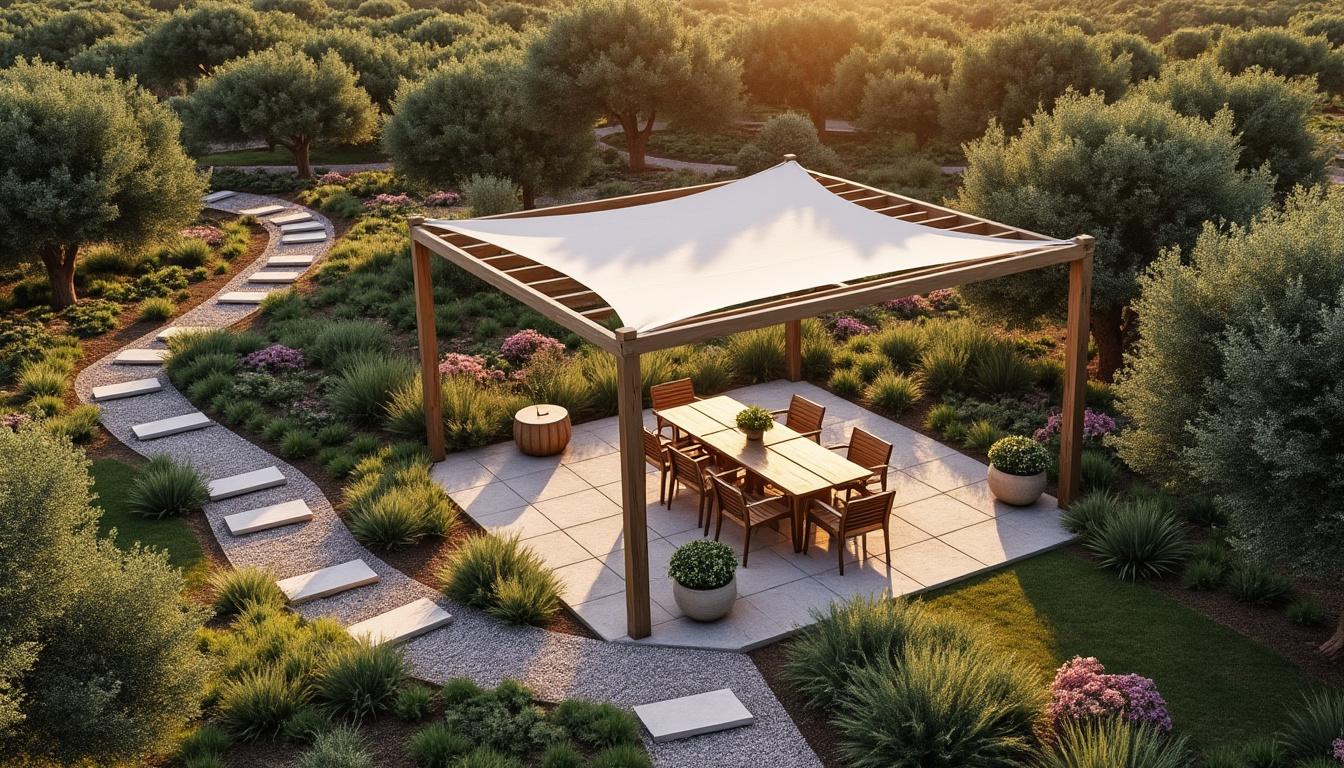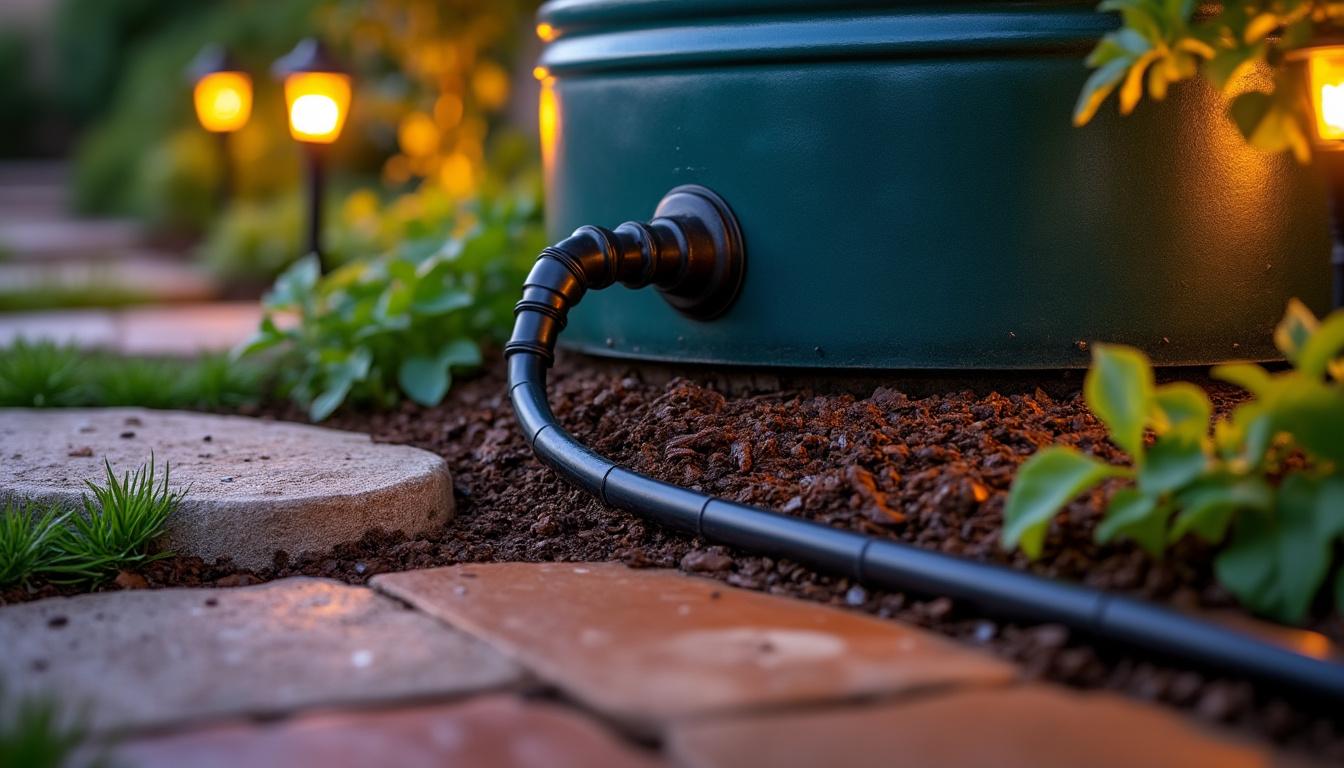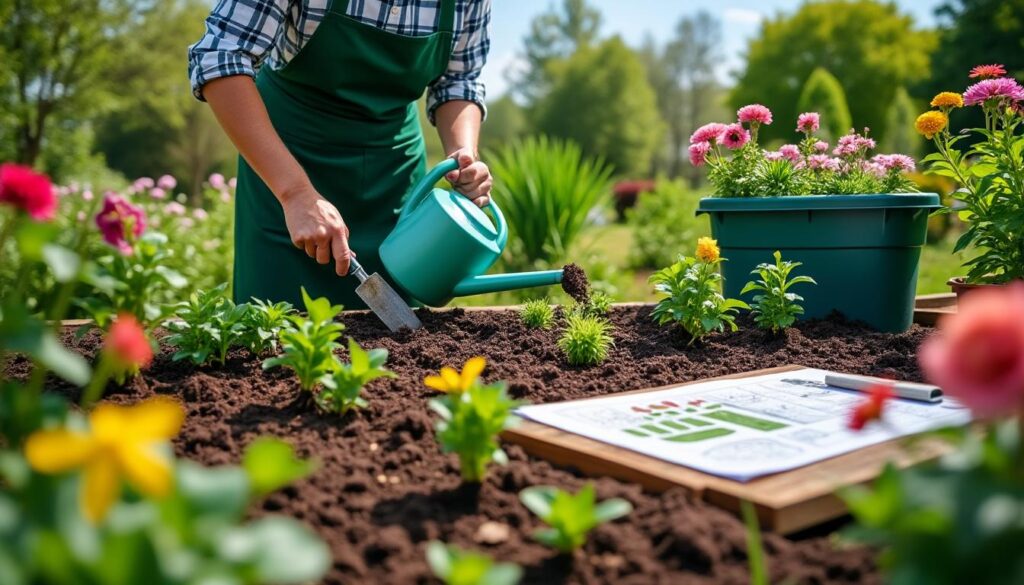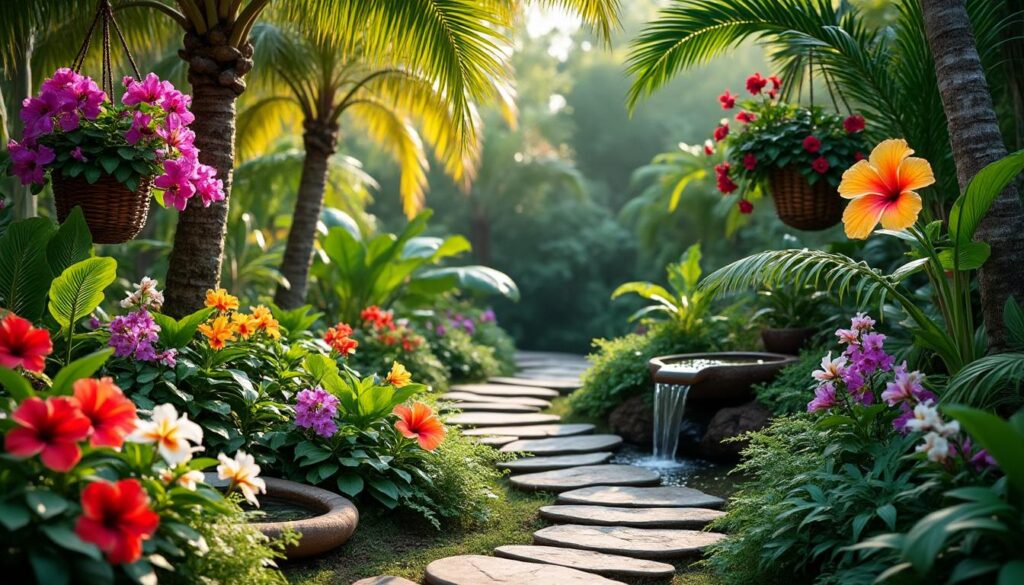In 2026, the ideal garden combines beauty, low resource consumption, and smart solutions. Here are trends and practical tips to transform your green space with discernment and pleasure.
| Short on time? Here’s the essentials: | |
|---|---|
| ✅ Key tip | How to apply today |
| 🌱 Smart planning | Map sunlight/shadow, wind, and uses; create zones and set a staggered budget. |
| 💧 Efficient watering | Drip irrigation + mulch reduce water consumption by up to 50% in beds. |
| 🌿 Native plants | Choose species resilient to the local climate for low maintenance and more biodiversity. |
| ✨ LED/solar lighting | Warm light (2700–3000K) enhances volumes and increases safety with minimal spending. |
Smart planning 2026: transform the garden with space analysis and functional zones
An efficient garden starts outside the soil: on paper. In 2026, planning means integrating climate, household habits, and maintenance into the design. The difference between a mediocre space and a green refuge lies in reading the terrain carefully and prioritizing what truly matters.
The first step is to observe. Record where the sun hits at different times, how the wind circulates, and where people naturally flow. Then, define uses: reading, meals, growing herbs, children’s play, outdoor work. This clarity guides the positioning of pergolas, paths, water points, and lighting.
Mapping climate and use: the basis for accurate decisions
A simple sketch resolves 80% of the doubts: draw the lot, indicate doors and windows, mark summer/winter shadows, and the views you want to highlight or hide. From there, adjust floor levels, create gentle slopes, and plan drainage to avoid puddles. In hot areas, light-colored surfaces reduce heat islands; in windy regions, permeable hedges act as windbreaks without blocking ventilation.
The case of the Almeida Family illustrates this well. With 120 m², the backyard had intense sun and ceramic flooring heating up in the summer. By redesigning with zones, replacing 30% of the flooring with draining pebbles, and adding a light pergola, the microclimate changed. The perceived temperature dropped, and the use of the space multiplied during the day and at night.
- 🧭 Use zones: meals, relaxation, garden, games, and services (compost bin, storage).
- 🌬️ Ventilation: permeable hedges and trellises guide the wind without creating wind tunnels.
- 🌞 Sun orientation: light-colored surfaces and filtered shade for intense sunsets.
- 🧱 Materials: draining flooring reduces waterlogging and heats less.
- 💰 Phases: implement in stages (structure, vegetation, furniture, details).
Common mistakes to avoid in 2026
Planting without considering the adult size of the species causes excessive shading, roots invading floors, and expensive maintenance. Another frequent slip is compressing functions: barbecues next to the garden generate grease in the soil and stress the plants. Maintain distances and respect usage flows.
| 🗺️ Item | 🎯 Goal | 🧩 Tool | 💡 Practical tip |
|---|---|---|---|
| Solar survey | Define species and shading | Solar trajectory app 📱 | Mark 9am/12pm/3pm for a typical day |
| Zoning | Avoid usage conflicts | Sketch + tape measure 📏 | Reserve 90 cm for comfortable circulation |
| Drainage | Avoid puddles and erosion | Bubble level 🫧 | Minimum slope of 1.5% to drain |
| Construction phases | Control costs | Budget spreadsheet 💻 | Prioritize infrastructure; detail later |
When the design respects climate and habits, the garden becomes intuitive and easy to maintain — the best guarantee of constant use throughout the year.

Biodiversity and native plants: the winning mix for gardens in 2026
The big trend of 2026 is the living landscape: green structures that feed pollinators, balance the soil, and require little watering. The key is to work in layers — tall, medium, and low — with textures and colors complementary throughout the seasons.
By mixing shapes and sizes, the garden gains visual depth and resilience. Species adapted to the local climate suffer less from heat waves and pests, in addition to needing less fertilization. Aromatic plants, for instance, scent the air, attract bees, and act as natural repellents.
Well-designed layers: volume and balance
In the upper strata, well-placed trees and palms structure the space and provide spot shade. In the middle level, thick shrubs add body to the beds. In the low level, ground covers close the soil, reducing evaporation and inhibiting spontaneous weeds. In small gardens, opt for compact species and elevated pots to create “levels” without stealing usable area.
- 🌳 Tall stature: olive tree, carob tree, Bambusa textilis non-invasive.
- 🌸 Shrubs: lavender, rosemary, myrtle, abelia, viburnum.
- 🍃 Low covers: thyme, dwarf sage, cheiranthus, low grasses.
- 🦋 Pollinators: lantana, dwarf buddleia, alternating colors per season.
- 🍓 Edibles: blueberries, raspberries, dwarf citrus in pots.
A smart color scheme helps. Gray foliage (lavender, wormwood) calms very sunny areas, while reddish tones (photinia, heuchera) create focal points. Plan sequential blooms to avoid “visual gaps” between seasons.
| 🌿 Stratum | 🌼 Suggested species | 💧 Watering | 🧭 Function |
|---|---|---|---|
| Tall | Olive tree, carob tree, Bambusa textilis 🎋 | Low after establishment | Light shade, visual landmark |
| Medium | Lavender, rosemary, myrtle, pittosporum 🌺 | Moderate, drip | Volume, aroma, pollinators |
| Low | Thyme, sedum, heuchera, fescue 🌾 | Very low | Ground cover, color |
| Trellis | Star jasmine, passionflower, honeysuckle 🌿 | Moderate | Vertical shade, fragrance |
For those starting now, a “biodiverse kit” works very well: an attractive shrub, two sturdy aromatics, a flowering ground cover, and a pot with dwarf citrus. In just a few weeks, the garden already comes alive with bees and butterflies, as well as aroma in meals.
By combining the right plants with a coherent design, maintenance decreases and the sensory experience increases — a perfect balance for busy routines.
Water, soil, and energy: efficient watering, rainwater harvesting, and smart lighting in 2026
The axis of sustainability in the garden goes through three fronts: well-managed water, healthy soil, and efficient light. Small choices accumulate big results, both in the bill and daily comfort.
Drip watering and soil cover
Drip lines near the root deliver water accurately and minimize evaporation. Associating mulch (pine bark, shavings, straw) regulates temperature and conserves moisture. In 2026, smart controllers with climate sensors automatically adjust watering after rain or heat waves.
- 💧 Drip + mulch: up to ~50% less consumption in beds, with more stable plants.
- 🌧️ Rain sensor: prevents unnecessary watering after precipitation.
- 🪱 Healthy soil: homemade compost feeds microorganisms and improves structure.
- 📆 Watering windows: early morning to reduce evaporation losses.
- 🧪 Moisture test: finger in the soil at 5 cm; if cool, postpone watering.
Water harvesting and rain gardens
Barrels of 200–500 L under the gutters collect water for watering and cleaning. In areas with runoff, shallow ditches and rain gardens infiltrate and filter water, protecting the pavement and recharging the soil. Combine this with draining floors and gentle slopes for a healthy water cycle.
100% LED lighting and solar points
Warm-colored LED fixtures (2700–3000K) create a cozy atmosphere with minimal consumption. Solar lanterns with LiFePO4 batteries last all night and eliminate the need for wiring. The trick is to illuminate volumes: highlight trunks, accentuate textures, and guide paths with diffused light.
| 🔧 Solution | 💶 Investment | 📉 Annual savings | ✨ Extra benefit |
|---|---|---|---|
| Drip | Medium 💸 | Up to 30–50% less water | Less fungus on leaves |
| Rain barrels | Low to medium 💧 | Visible reduction in the bill | Autonomy in dry periods |
| LED/solar | Low to medium 🔆 | 80% vs. halogen | Light without heating |
| Composting | Low ♻️ | Less purchased fertilizer | Fertile and structured soil |
By implementing these measures, the Almeida Family reduced their watering by one third and changed to watering less often with better results. The rule is clear: efficiency adds comfort and savings, with immediate impact on routine.

Vertical garden and small spaces: modular solutions for balconies and walls in 2026
Not every garden has soil. In 2026, walls, balconies, and terraces become productive areas with vertical gardens, modular pots, and trellises for climbing plants. Aesthetics come along with thermal comfort and cleaner air, especially in urban areas.
How to make use of walls and corners
Choose the wall with the best indirect light, install modular panels or treated pallets, and distribute pots at different heights. Use light and draining substrate, with irrigation from a perforated hose at the top of the modules. Metal or wooden trellises guide star jasmine and passionflower, creating living shade without occupying the floor.
- 🧱 Structure: treated pallets, plastic modules, panels with textile pockets.
- 🌿 Ideal plants: pothos, ferns, star ivy, strawberries, dwarf vegetables.
- 💦 Watering: drip at the top + collector tray to avoid runoff.
- 🧼 Maintenance: light monthly pruning and substrate replacement in autumn.
- 🪟 Balconies: narrow pots with anti-fall supports and certified fastenings.
| 🧩 System | 📈 Difficulty | 🌱 Best use | ⚠️ Errors to avoid |
|---|---|---|---|
| Reused pallets | Low 😊 | Small balconies | Untreated wood; risk of pests |
| Modules with reservoir | Medium 🔧 | Sunny wall | Excess water; rotting |
| Textile pockets | Low 🧵 | Foliage and aromatics | Heavy substrate; fabric yielding |
| Trellis for climbing plants | Low 🪜 | Living shade | Weak fastening on old walls |
To take the first step, a panel of 1 m² with 15–20 small pots is sufficient. Mix trailing foliage, a row of herbs, and two flowering points for seasonality. In windy balconies, prefer species with firm leaves and well-anchored structures.
When the vertical comes into play, “almost no space” transforms into a functional living wall — freshness, beauty, and utility in one gesture.
Community, lighting, and aesthetics: pergolas, paths, and sustainable materials for 2026
The garden of 2026 is meant to be lived in. Comfort, acoustic and visual well-being go hand-in-hand with durable furniture, well-thought-out lighting, and natural materials. A design that welcomes people generates moments — the true indicator of project success.
Shadows, noise, and comfort
Light structures with filtered shading (canopies, bamboo, laminated wood) reduce heat without darkening. Fountains and water mirrors add soft ambient sound and increase local humidity during heat waves. Outdoor rugs made of recycled fibers make seating areas cozier and define spaces.
- 🪑 Furniture: aluminum or treated wood, outdoor fabrics, and washable covers.
- 🕯️ Light: uplights in trees, path markers, and indirect lighting in the dining area.
- 🪵 Paths: fine gravel, pebbles, or draining pavers with green joints.
- ⛲ Water: shallow basins for reflection and bird baths.
- 🧴 Maintenance: annual non-toxic sealants on wood and post-winter inspection.
Decorate with intention and low maintenance
Choose a few elements with a strong presence: a subtle sculpture, a large ceramic pot, or an integrated bench. Stones delineate beds and guide the eye. In urban gardens, vertical mirrors enlarge depth, but use them sparingly to avoid excessive reflections.
| 🎯 Zone | 🧰 Key elements | 🌍 Sustainable materials | ✨ Aesthetic note |
|---|---|---|---|
| Meals | Table, chairs, pergola, warm light 🍽️ | Certified wood, LED | Filtered shade + adjustable pendants |
| Relaxation | Chaise, hammock, outdoor rug 💤 | Recycled fibers | Earth tones, aromatic plants |
| Paths | Path markers, draining pavers 🚶 | Local aggregates | Low light every 2–3 m |
| Sound break | Fountain, water mirror, dense plants 🎶 | Efficient pump | Continuous and soft sound |
For nighttime use, the appropriate color temperature and good positioning make all the difference. Avoid direct glare and prefer to highlight volumes and textures. The result is a garden that invites you to stay — with maintenance and costs under control.
If you want to delve into ecological and efficient solutions, it’s worth exploring practical ideas at Ecopassivehouses.pt — a space full of references on applied sustainability.
Which heat-resistant plants work well in 2026?
For intense sun and low maintenance, combine olive tree (tall), lavender and rosemary (medium), and thyme or sedum (low). Add grasses like fescue for texture and movement.
How to reduce watering without losing plant vigor?
Install drip irrigation near the root, cover the soil with 5–7 cm of mulch, and use a rain sensor on the controller. Water in the early morning and adjust for the season. This setup can cut consumption by 30–50% in beds.
Do vertical gardens require a lot of work?
With well-secured modules, light substrate, and simple drip system, maintenance is monthly (light pruning, leaf cleaning, and partial substrate replacement). Choose robust species like pothos, ferns, and aromatics.
Which outdoor lighting should I choose for a cozy effect?
Use warm LED (2700–3000K), low path markers, soft uplights in trees, and indirect light in the gathering area. In areas without energy, solar markers with LiFePO4 batteries work very well.


